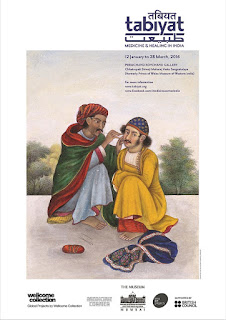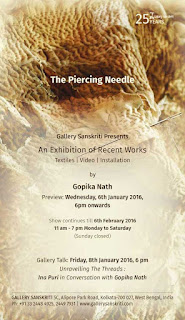Home décor is all about expressing your individuality in a creative and aesthetic manner, while keeping functionality in mind. Building your décor around a statement piece of furniture gives a refreshing approach to the décor, and has the potential to create a dramatic visual impact.
Now, even if you do not have statement furniture with you, you can easily convert one by using Asian Paints latest range of wood colours and polishes. For instance, this antique chest of drawers here is what I would like to have as an end product which can anchor the space. So, all I have to do is check out their Woodtech Studio and select colours and finishes which suit my requirement. I can also select the wood and then cross check to see what the best matches are.

Essentially, Asian Paints Woodtech series of wood care products offer complete solutions in a wide range of wood finishes. Their finishing products are perfect for creating beautifully finished furniture and floors, and for restoring old pieces. In fact, all blemishes and scratches get blended to create a smooth flawless finish.
The website allows you to create, refurbish and reinvent furniture for your home. Offering valuable advice and tips, the information is easy to navigate and is complete with practical, doable and expert advice tailored completely to your requirements.
For instance, I chose Rosewood for my Chest of Drawers and I was offered information about the wood as well – ‘Rosewood is close-grained hard wood, with the heartwood of either golden brown or a dark blood-red colour and the sapwood of pale yellow. It has an exclusive fragrance. It is hard to work upon but takes polish well. The material has high bending and crushing strengths with low stiffness and medium resistance to shock loads. The surface has a tendency to check and split when air dried rapidly. It is very durable and moderately resistant to termites in Indian climates’. It is good to learn more about different types of wood, and the kind of finishes that match better, and most importantly how best to conceptualize the décor keeping various eras and styles in mind.
Since, I chose a vintage look from the options offered, I could also read more about the thematic and historic details, ‘Vintage interiors are inspired from art styles of eras gone by. Ranging from the English elegance showcased in the royalty-inspired Victorian times to the free-spirited French-born Art Nouveau, there is a vintage style to suit every character palette here’.
What is interesting is that videos from the video gallery offer step-by-step application process of Woodtech finishes and the guidelines to get the desired wood finish, making it easy to work on your own.
The best way to benefit from this range of products would be to visit their award winning concept stores in Mumbai, Delhi and Kolkata. You can look forward to amazing inspiration ideas, expert advice from experienced Colour Consultants and many more services which will help you make your beautiful home a reality.
This post is a part of Asian Paints Woodtech Studio’s campaign
What is statement furniture?
Statement furniture is any piece of furniture which stands out in a given space, due to its design, colour and unique aesthetics. It can be a furniture piece that sets the tone for the room; it may even act as a focal point, and essentially ensures that all eyes are drawn to it as one enters the room. For instance, it could be a low coffee table in mahogany, a stunning Victorian desk, an antique dresser or an ornately carved chair. It could also be a book shelf in a startling red or white, or a study table in vibrant yellow!Now, even if you do not have statement furniture with you, you can easily convert one by using Asian Paints latest range of wood colours and polishes. For instance, this antique chest of drawers here is what I would like to have as an end product which can anchor the space. So, all I have to do is check out their Woodtech Studio and select colours and finishes which suit my requirement. I can also select the wood and then cross check to see what the best matches are.

Essentially, Asian Paints Woodtech series of wood care products offer complete solutions in a wide range of wood finishes. Their finishing products are perfect for creating beautifully finished furniture and floors, and for restoring old pieces. In fact, all blemishes and scratches get blended to create a smooth flawless finish.
The website allows you to create, refurbish and reinvent furniture for your home. Offering valuable advice and tips, the information is easy to navigate and is complete with practical, doable and expert advice tailored completely to your requirements.
For instance, I chose Rosewood for my Chest of Drawers and I was offered information about the wood as well – ‘Rosewood is close-grained hard wood, with the heartwood of either golden brown or a dark blood-red colour and the sapwood of pale yellow. It has an exclusive fragrance. It is hard to work upon but takes polish well. The material has high bending and crushing strengths with low stiffness and medium resistance to shock loads. The surface has a tendency to check and split when air dried rapidly. It is very durable and moderately resistant to termites in Indian climates’. It is good to learn more about different types of wood, and the kind of finishes that match better, and most importantly how best to conceptualize the décor keeping various eras and styles in mind.
Since, I chose a vintage look from the options offered, I could also read more about the thematic and historic details, ‘Vintage interiors are inspired from art styles of eras gone by. Ranging from the English elegance showcased in the royalty-inspired Victorian times to the free-spirited French-born Art Nouveau, there is a vintage style to suit every character palette here’.
What is interesting is that videos from the video gallery offer step-by-step application process of Woodtech finishes and the guidelines to get the desired wood finish, making it easy to work on your own.
The best way to benefit from this range of products would be to visit their award winning concept stores in Mumbai, Delhi and Kolkata. You can look forward to amazing inspiration ideas, expert advice from experienced Colour Consultants and many more services which will help you make your beautiful home a reality.
This post is a part of Asian Paints Woodtech Studio’s campaign









